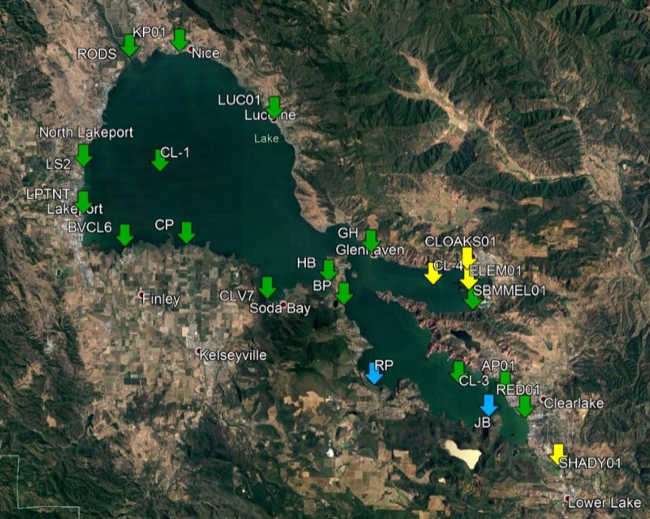
LAKE COUNTY, Calif. – Lake County Public Health reported that the latest round of testing for blue-green algae cyanotoxins on Clear Lake has resulted in “caution” levels for several areas.
Officials said current cyanotoxin results for lakewide sampling conducted Aug. 15 and Aug. 21 – which results received on Aug. 29 – detected microcystin at 12 of 21 sampled sites.
Four of those sites resulted in caution trigger levels: the center of the Oaks Arm, Clearlake Oaks shoreline, Elem shoreline and Cache Creek at Highway 53.
The remaining sites do not reach any trigger levels, were nondetect for toxins, or were not sampled due to being inaccessible, official said.
The next monitoring event will be Sept. 10.
This week's reading are lower than previously, but two consecutive improved readings are needed before the county can change the level of alert for cyanobacteria that went out on Aug. 10.
Be aware that you will see signs for a higher level – for example, danger instead of caution – until there are two readings at the lower level. Public Health also needs two consecutive nondetect readings before they remove signs.
Blue-green algae can pose health risks, particularly to children and pets. Local health officials urge people to choose safe activities when visiting the Oaks Arm and parts of the Lower Arm of Clear Lake and wherever blooms are visible.
It is strongly recommended that people and their pets avoid contact with water and avoid swallowing lake water in an algae bloom area.
Public Health recommends following the below from the statewide guidance on cyanobacteria and harmful algal blooms:
• Take care that pets and livestock do not drink the water, swim through algae, scums or mats, or lick their fur after going in the water. Rinse pets in clean water to remove algae from fur.
• Avoid wading, swimming, jet or water skiing in water containing algae blooms, scums or mats.
• Do not drink, cook or wash dishes with untreated surface water from these areas under any circumstances; common water purification techniques such as camping filters, tablets and boiling do not remove toxins.
• People should not eat mussels or other bivalves collected from these areas. Limit or avoid eating fish from these areas; if fish are consumed, remove the guts and liver, and rinse filets in clean drinking water.
• Get medical treatment immediately if you think that you, your pet, or livestock might have been poisoned by blue-green algae toxins. Be sure to alert the medical professional to the possible contact with blue-green algae. Also, make sure to contact the local county public health department at 707-263-1090.

 How to resolve AdBlock issue?
How to resolve AdBlock issue? 



